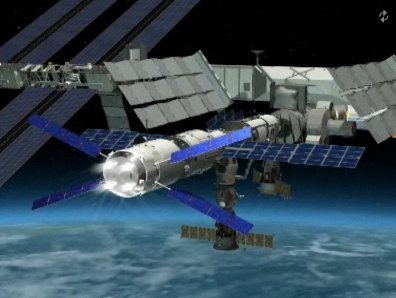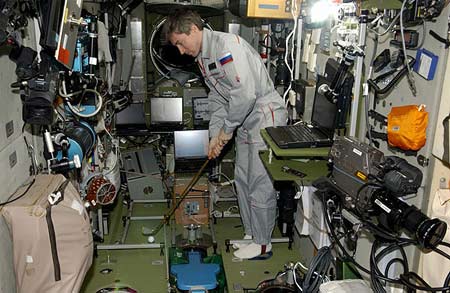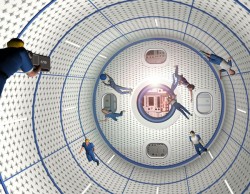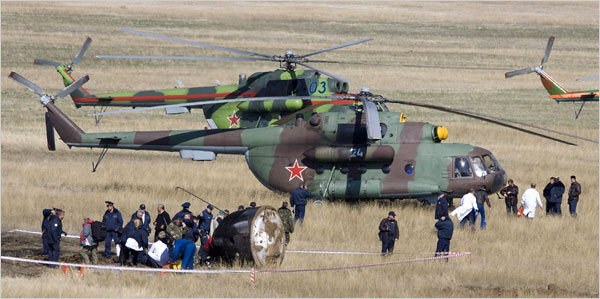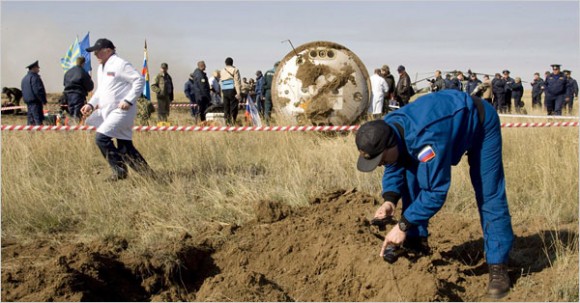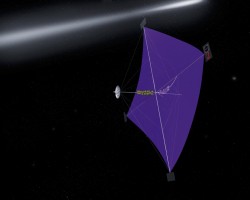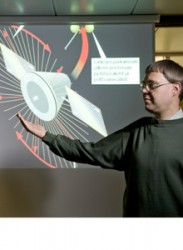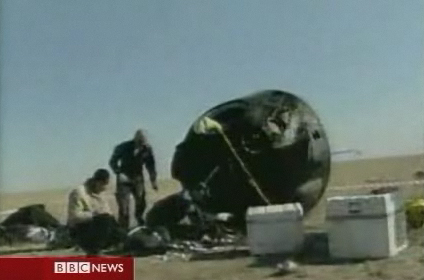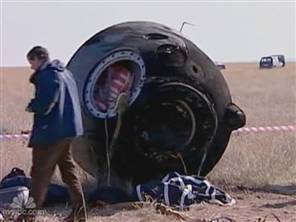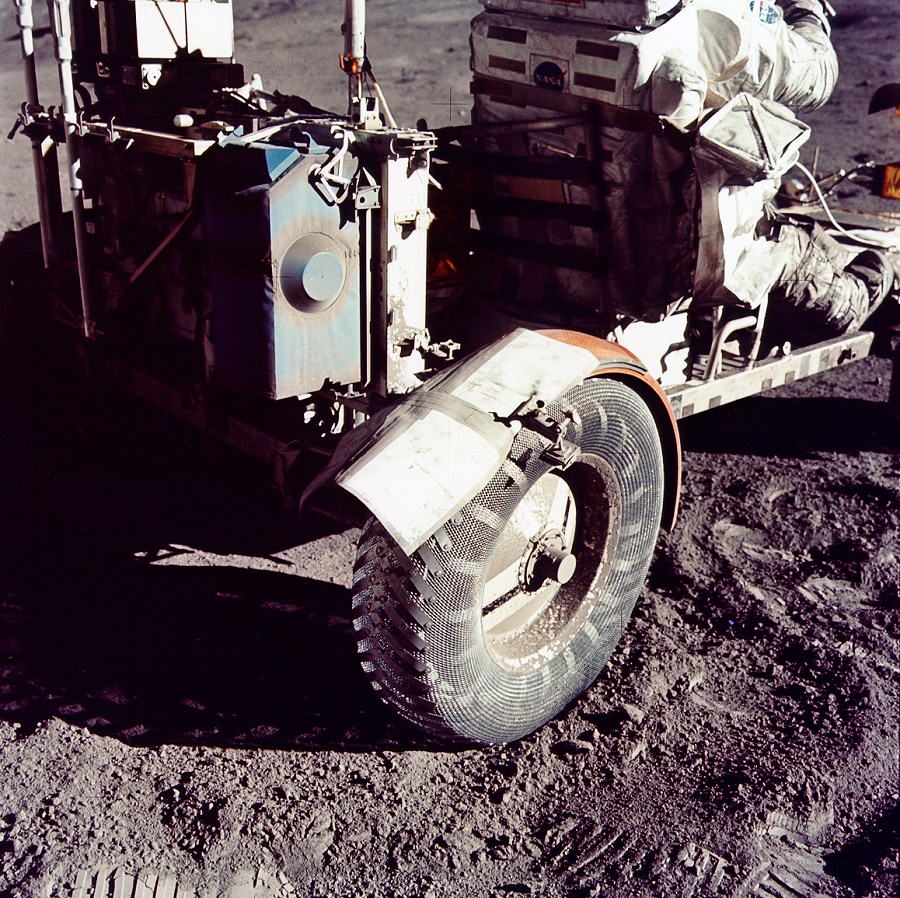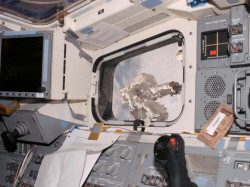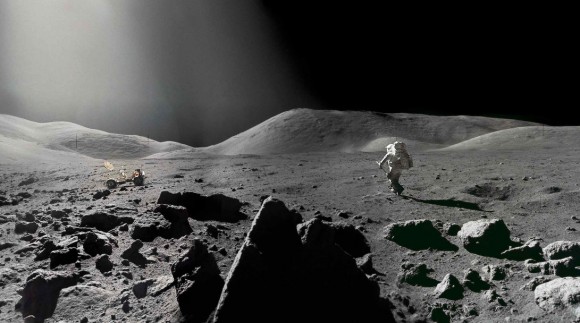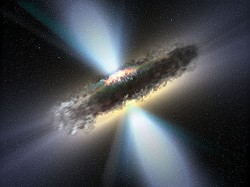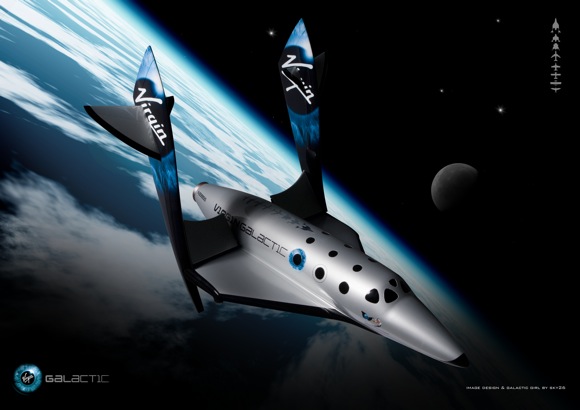For the first time since docking with the International Space Station (ISS) on April 3rd, the Automated Transfer Vehicle (A T V) “Jules Verne” has been awoken and instructed to carry out an impressive task: push the ISS to a higher orbit. The robotic supply vessel, currently attached to the station’s Zvezda module carried out a 12 minute 20 second burn of its main engines. This is the first time an ESA spaceship has carried out such a task and it appears to have performed flawlessly, lifting the 280 tonne station 4.5 km (2.8 miles) to a new altitude of 342 km (213 miles). In true ESA style, they’ve even released a cool video simulation of the event…
Periodically, the ISS needs a small push in the right direction. As the station orbits Earth, it experiences a small amount of friction from the extended atmosphere of our planet. This atmospheric drag slows the orbiting outpost, making it drop to a lower orbit. When needed, the ISS must to be pushed to higher altitudes. Until now, “re-boosts” have been performed by the Space Shuttle, Russian Progress and by the ISS itself; but today, it was the turn of the most advanced European spacecraft ever put into space. Due to the large quantities of fuel still on board, Jules Verne is ideal for this manoeuvre.
At 04:22 GMT Friday morning, two of the four powerful ATV rockets burst to life after being given the signal from mission control in Toulouse, France. The supply ship provided a thrust of 2.65 m/s, accelerating the ISS along its orbital path. This increased speed increased its orbit. Mission controllers carefully monitored events for the long 740 seconds.
See the ESA video simulation of the ATV re-boost »
This re-boost comes after three weeks of inactivity for the ATV. The unmanned cargo vessel was launched on March 9th to take 1150 kg (2535 lb) of water, food and other supplies to the ISS. This proved to be a very busy time for space traffic control. First the ATV was launched, then on March 11th Space Shuttle Endeavour was sent on her way, then on April 8th Soyuz ISS 16S was launched. Jules Verne drew the short straw and had to wait in a parking orbit until Endeavour had docked, carried out its mission and then returned home. The ATV used this time to run tests until it was cleared for docking on April 3rd.
Now the ISS is ready for the arrival of Space Shuttle Discovery (STS-124) scheduled for launch at the end of May. Discovery will deliver the Japanese Kibo laboratory to be installed on the growing station. Another three re-boosts are planned for the ATV on June 12th, July 8th and August 6th. Shortly after the last boost, Jules Verne is destined to be detached from the Zvezda module and dropped into the atmosphere, carrying 6.5 tonnes of trash into a controlled re-entry burn over the Pacific Ocean. A sad end to an amazing piece of technology.
Source: ESA

